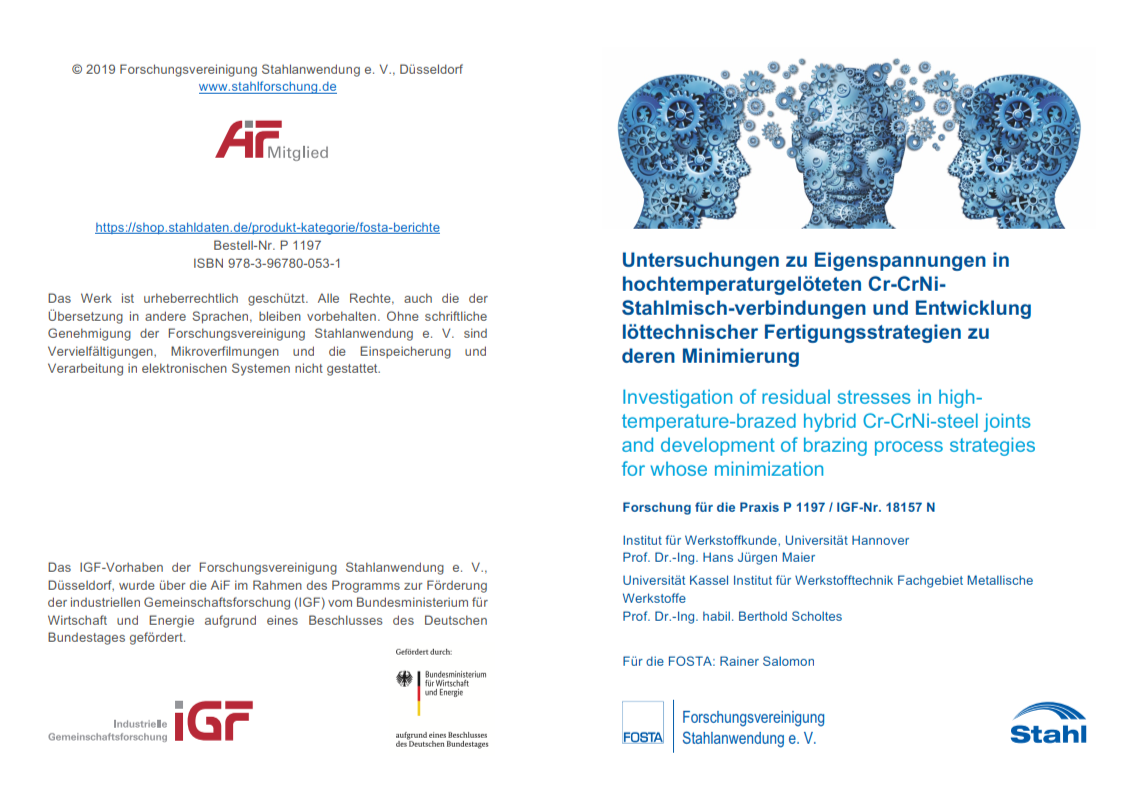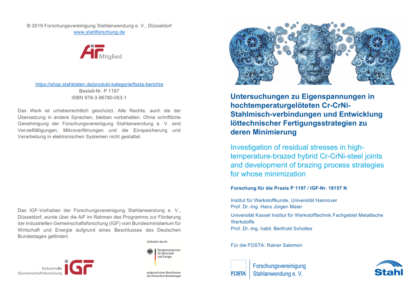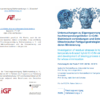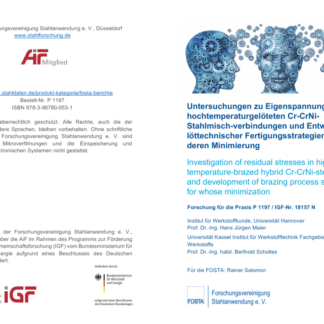Description
P 1197 – Investigation of residual stresses in hightemperature-brazed hybrid Cr-CrNi-steel joints and development of brazing process strategies for whose minimization
Many components are manufactured from high-alloyed steel materials, which are brazed in vacuum or protective gas furnaces at temperatures above 900 °C. For a number of applications, it is desirable to join ferritic and austenitic steel materials together. Due to the different thermo-mechanical properties of the joining partners brazed considerable residual stresses can occur in this case, which leads to a significant weakening of these brazed joints. In the context of this project, the residual stresses in dissolved steel mixed joints were analyzed and production strategies for minimizing residual stresses in the brazed mixed joints were investigated.
Specifically, box-shaped sheet metal component models with different joining geometry of steel grades 1.4301 and 1.4521 were brazed in a vacuum furnace with / without stress-relieving annealing and in an inert gas continuous furnace using two different high-temperature braze metals (copper, nickel-based braze metal). The residual stresses were measured then by means of X-ray diffractometry as well as the hole drilling method at the joint zones and compared with likewise performed FEM simulations.
The following results were obtained from these investigations:
1. Regardless of the selected braze metal, the brazing process and the order of the material arrangement, residual stresses were measured over the entire joining surface, which reached in maximum the materials tensile elastic limit on the ferrites (1.4521) side. Conversely, the austenite (1.4301) was compressed to above its compression elastic limit by the occurring tension forces.
2. Along with the residual stresses, significant deformation was observed on the brazed samples.
3. Significant differences in the distribution and level of residual stresses as a function of the process conditions and joining geometries are not determined. Only by using additional brazed compensation plates the residual compressive stresses in the ferritic joining partner could be reduced. In this case, the component distortion is lower than on the components without compensation plates.
4. An additional stress relief annealing of the brazed component models led to a slight reduction of residual stress peaks. In addition, further improvements in the use of thick copper layers in the joining zones are noted.
5. Both the deformations and the experimentally determined residual stress distributions in the component samples were in good agreement with the FEM simulations, where specially determined material data were used for the temperature-dependent stress-strain behavior of the sheet metal materials. The FEM simulation also provided information about the residual stresses in the experimentally non-accessible brazed seams themselves: tensile residual stresses at the level of the yield point of the braze metal (copper) always occurred here.
Published in:
2019
Authors:
Prof. Dr.-Ing. H. J. Maier, Prof. Dr.-Ing. habil. B. Scholtes




